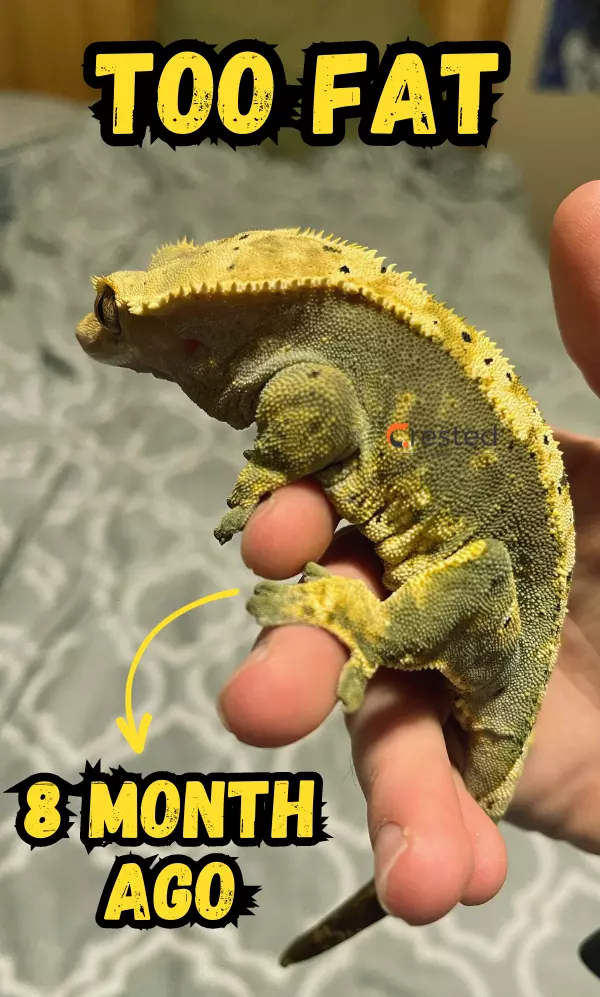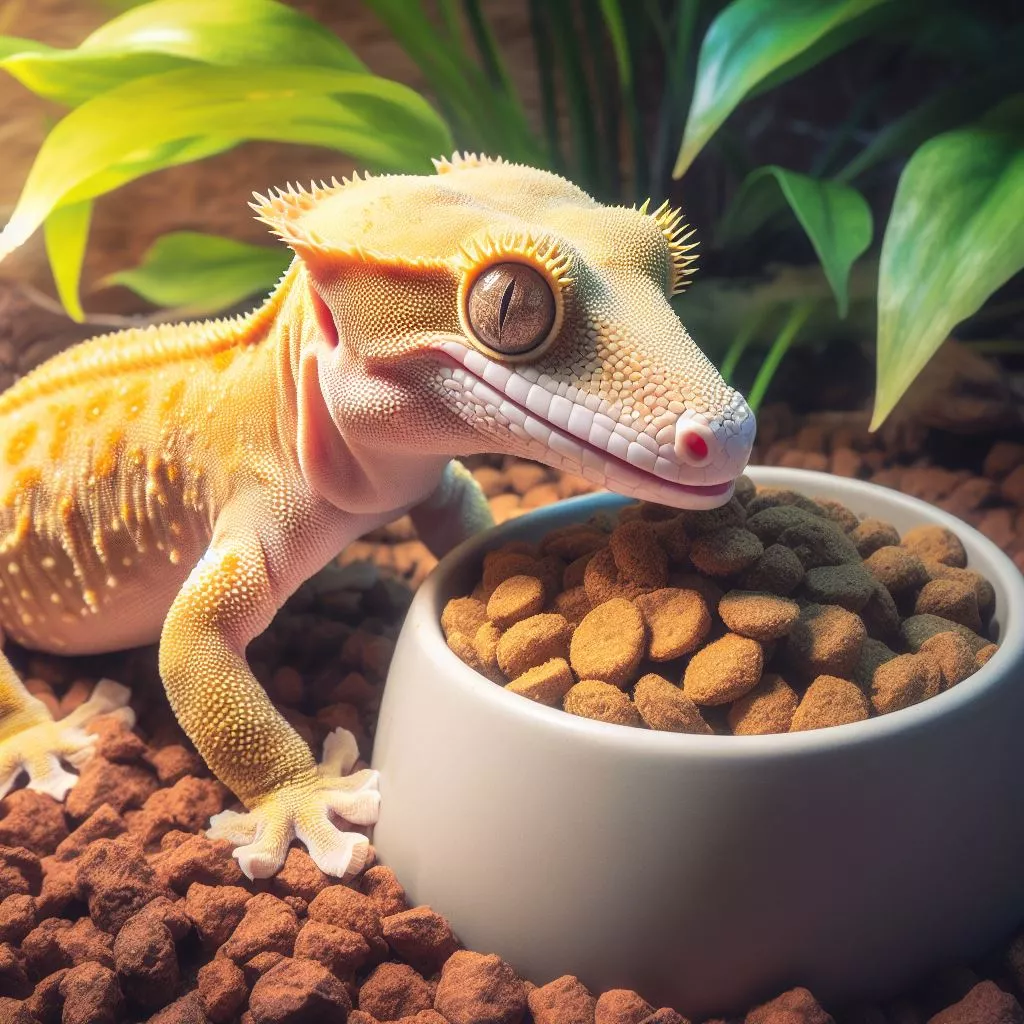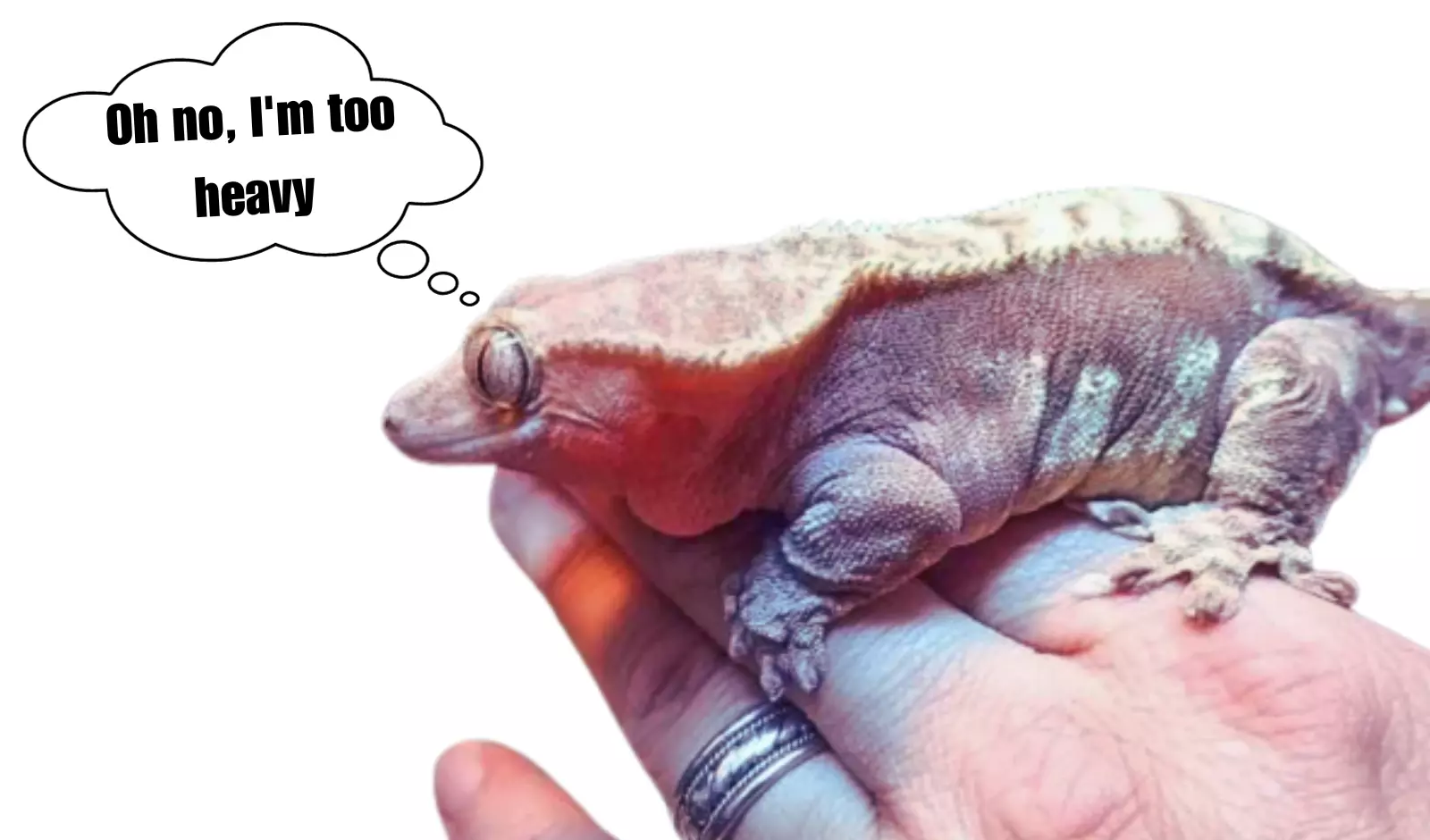Everyone who has a pet knows the special bond that forms between them and their furry or scaly companions.
This bond is especially even strong in us, (Gecko Owners), with our little guy compared to others!
Just after a few months of bringing him to my house, I started noticing that he was getting fat gradually. I thought he was just fine and it’s a sign of healthiness.
However, as time passed, I began to realize that my fat crested gecko might have been packing on a few too many extra pounds.
So, I consulted a vet in my area!
Before I discuss exactly what I did, here is an image from that time:

However, here is my roadmap:
1) Reduced her food intake

One of the main reasons why my crested gecko became fat was because I was overfeeding her.
I thought giving more food meant helping her grow faster and stronger, but instead, it made her gain excess fat that put heavy pressure on her organs and joints.
So my first stop was here!
Over several weeks, I reduced her food intake gradually following a general rule of thumb that says
“Feed your gecko as much as they can eat in 15 minutes.”
2) Changed her food type

I used to give her mostly crickets, which (you know) are high in protein and fat, but low in calcium and vitamins.
Note, I’m not saying Crickets are a bad food choice for crested geckos, but you should offer it in moderation and supplemented with other food sources.
In my case, I changed her food type from crickets to Repashy and served it in a dish mixed with water.
A Quick Head-up: Repashy is specially formulated to meet nutritional needs, and it contains a balanced ratio of protein, fat, calcium, vitamins, and minerals. So, if your guy is too very fat, you can offer him Repashy.
3) Increased his activity level

He spent most of his time hiding in his enclosure, sleeping or resting.
This was a major headache for me. Of course, not just for me, but for every owner whose pet behaves this way; they react in a similar manner. We all want him to be very playful and active with us.
At first, I didn’t care about it; rather thought resting would be helpful for his health.
But seeing his condition, blood was gone in my head.
So, following the advice from the vet:
- Increased his activity level by making his enclosure more fun and interesting.
- Added more plants, branches, vines, ledges, and hides to create a naturalistic and complex environment that encouraged him to climb, jump, explore, and hunt.
- Also, added some enrichment items such as a tire swing, a coconut hide with a ladder, and a hammock to provide him with more opportunities to play and exercise.
- Upgraded the tank size from 12x12x18 to 18x18x24.
Once you’ve done what I did, monitor his weight regularly using a digital scale and a weight chart.
Record his weight in grams on a chart that shows the average weight range for crested geckos based on their age and sex.
Then compare his weight with the chart to see if he is underweight, overweight, or within the normal range.
Note: Regularly Have Your Gecko Checked by an Experienced Reptile Veterinarian whenever you notice any signs of illness or injury, such as lethargy, loss of appetite, vomiting, diarrhea, bleeding, swelling, limping, or abnormal behavior.

